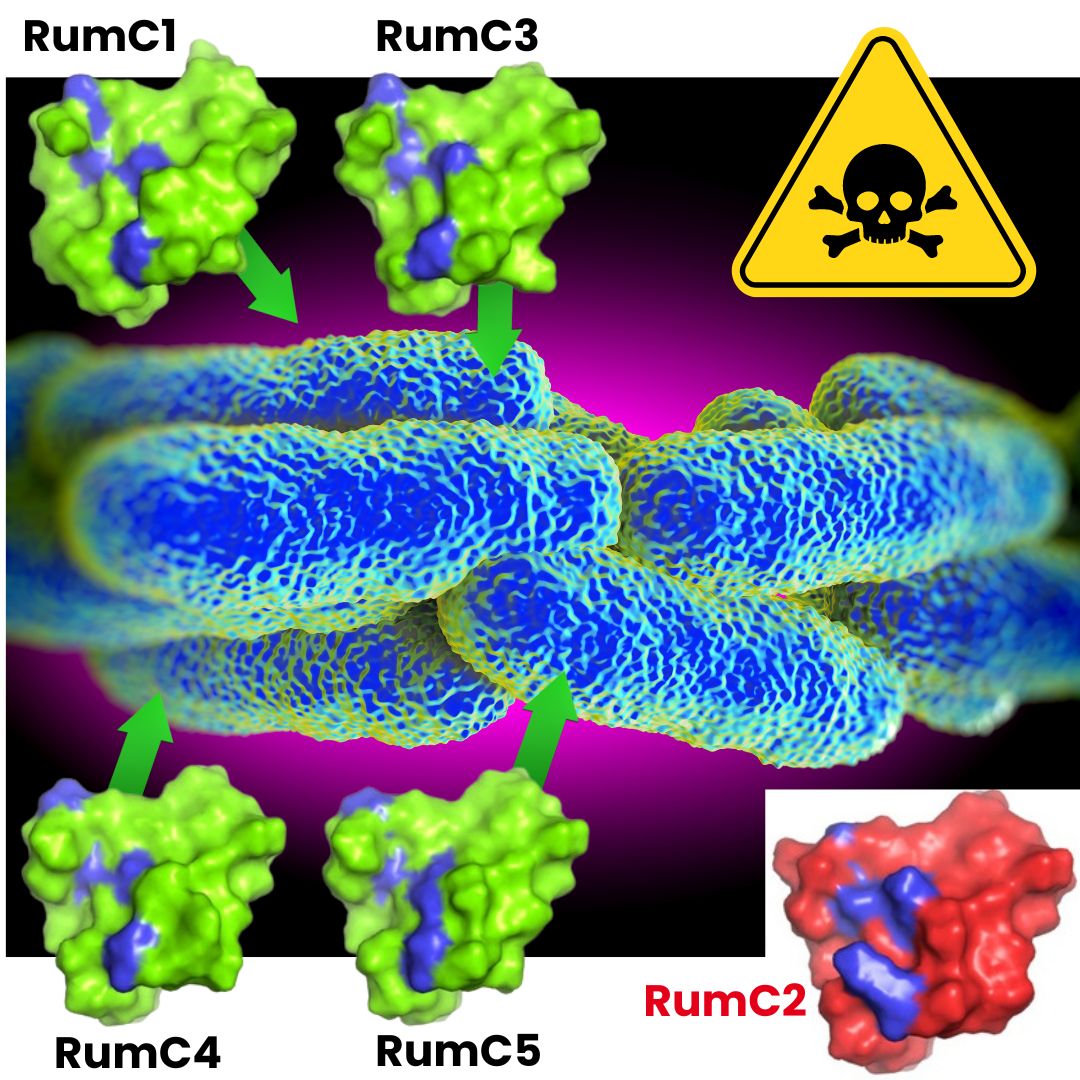The WHO predicts that antibiotic resistance could cause 10 million deaths a year by 2050. Scientists are therefore directing their research towards new natural molecules with structures and modes of action that differ from conventional antibiotics. Antimicrobial peptides or bacteriocins produced by bacteria, represent a very promising alternative. In this way, bacteria from the human gut microbiota represent a vast field of investigation that is still relatively unexplored.
Researchers at IRIG in collaboration with the Institut des Sciences Moléculaires de Marseille and the Laboratoire de Microbiologie Génétique et Moléculaire de Toulouse, are studying
Ruminococcus gnavus E1, a symbiotic bacterium that produces several antimicrobial peptides, including Ruminococcins C. These peptides, expressed as 5 isoforms (RumC1-5), are highly effective against multidrug-resistant pathogens. They have diverse activity spectra, with no synergistic effects between the different isoforms. In addition to their low toxicity, Ruminococcins C also possess other beneficial health properties, such as an anti-inflammatory effect.

Figure: Antibacterial activity: unlike the other Ruminococcins C, RumC2 is not effective. The nature of the residues shown in blue in the figure may explain these differences in reactivity. Credit CEA
Ruminococcins C possess properties that are often lacking in other antimicrobial peptides, including high resistance to physiological conditions, efficacy at very low doses and low toxicity. Ongoing work aims to elucidate the mode of action and to identify the cellular target(s) of these molecules.
Financial support from ANR RUMBA (2016-2020), ANR RUMisBAC (2021-2025), CFR CEA (2016-2019/2020-2023)